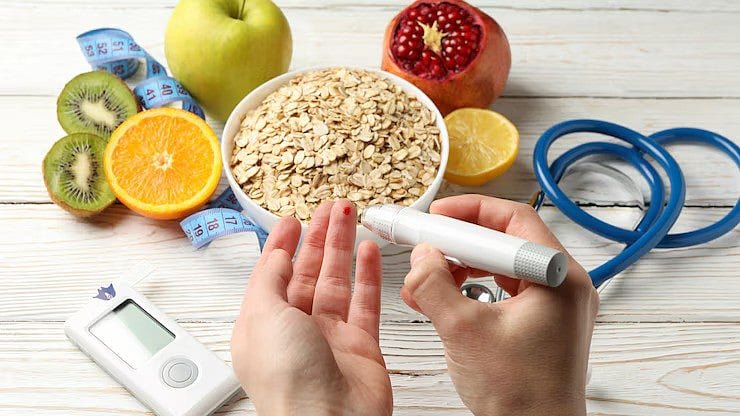When managing blood sugar levels, the focus often falls on cutting out sugar, eating fibre and staying active. While these are critical, protein is often overlooked. Surprisingly, protein plays a vital role in stabilising blood sugar levels, yet most Indian diets fail to include enough of this essential macronutrient.
India’s nutritional landscape reveals a concerning trend. According to the Indian Market Research Bureau, over 70% of Indians consume diets deficient in protein. This is alarming in a country where 32.8% of the population has Prediabetes (Lancet). Indian meals, rich in carbohydrates like rice, chapati and potatoes, often fail to provide the protein needed to support metabolic health.
Busting protein myths
Protein is often misunderstood. Many believe it’s only for bodybuilders. This couldn’t be further from the truth. Another common myth is that protein harms the kidneys. Research shows that consuming appropriate amounts of protein does not harm kidney function in healthy individuals.
Protein is well-known for its role in muscle maintenance and growth. However, it also supports metabolism, hormone production and immune function, and is a great ally for blood sugar control. Inadequate protein intake can lead to visible signs and symptoms like hair loss, brittle nails, fatigue and poor immunity, along with impaired glucose tolerance – issues many Indians face without understanding the root cause.
How much do you really need?
The Indian Council of Medical Research (ICMR) recommends 0.8–1 gram of protein per kilogram of body weight daily. For a 60 kg adult, this means 48–60 g of protein per day. However, many people fall short of this target due to inadequate planning and misconceptions about protein sources.
Dal, a staple in Indian households, is often relied upon as a primary protein source. While nutritious, it alone cannot meet daily protein needs. A standard bowl of cooked dal (from about 30 g of raw lentils) contains 7–9 g of protein. Even consuming two servings a day adds up to only 14–18 g – far below the daily requirement.
Silent ally Protein plays multiple roles in stabilising blood sugar levels:
Reduces glycaemic response: When consumed with carbohydrates, protein slows glucose absorption, preventing sharp spikes in blood sugar.
Improves insulin sensitivity: Adequate protein intake enhances the body’s response to insulin, a critical hormone for blood sugar regulation.
Promotes satiety: Protein keeps you fuller for longer, reducing cravings and preventing overeating.
Sources
Vegetarian protein options
Dairy: Paneer, curd, and milk are versatile and easy to include.
Legumes and pulses: Rajma, chana, masoor dal, moong dal and peanuts are traditional staples.
Soy-based foods: Tofu and edamame are excellent sources of high-quality protein, particularly for vegetarians and vegans.
Nuts and seeds: Almonds, walnuts, chia seeds and flaxseeds provide protein along with healthy fats.
Non-vegetarian protein options
Eggs: Affordable and nutrient-rich, eggs are a complete protein source.
Poultry and meat: Chicken, mutton and other meats are excellent sources of protein.
Seafood: Fish like salmon, mackerel and prawns provide protein along with essential omega-3 fatty acids.
Building a protein-rich day
Here’s a simple day’s plan adding up to 48–60 g of protein.
Breakfast
Paneer-stuffed paratha (50 g paneer, 10 g protein) with a bowl of yogurt (6 g protein)
2 boiled eggs (12 g protein) with a slice of whole-grain toast (3 g protein)
Lunch
1 cup cooked rajma (15 g protein) with 1 multigrain roti (3 g protein) and a bowl of curd (6 g protein)
Chicken curry (100 g chicken, 20 g protein) with a small portion of steamed rice (4 g protein)
Evening Snack
Peanut chaat (50 g peanuts, 14 g protein)
Greek yogurt (100 g, 10 g protein) topped with fresh berries
Dinner
Paneer capsicum tikka (100 g, 14 g protein) with a small bowl of masoor dal (7 g protein) and a small serving of rice (4 g protein)
Grilled fish (100 g, 20 g protein) with sautéed broccoli (2 g protein) and a side of roasted sweet potatoes (2 g protein)
Final thoughts
If you’re looking for ways to better manage your blood sugar levels, prioritising protein is a game-changer. Beyond stabilising blood sugar, protein helps improve energy levels, reduces cravings, and promotes better overall health.
For Indians, incorporating protein into daily meals doesn’t have to be difficult. From paneer and legumes to chicken curry and grilled fish, the options are endless. Rethink your plate today. With small, consistent changes and an emphasis on variety, you can let protein take centre stage in managing your blood sugar and transforming your health.
(Madhavi Shilpi, Nutritionist and Prediabetes Coach)




